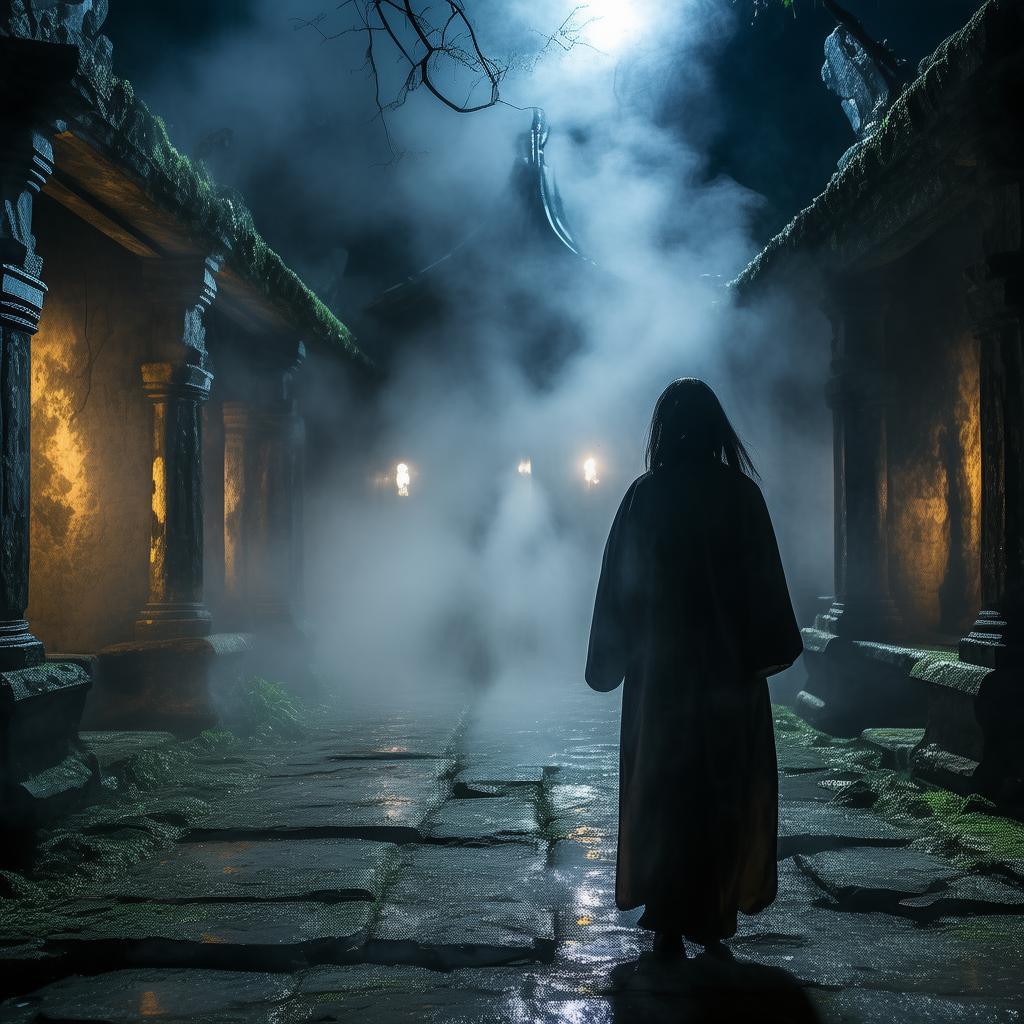The Kiln's Silent Witness
The sun dipped low, casting an amber glow over the old kiln, its once-bustling heart now a silent witness to the ebb and flow of time. It stood at the edge of a forgotten town, a relic of a bygone era. Among the overgrown brush and the rusting machinery, the kiln had remained a silent sentinel, its secrets buried beneath the layers of earth and history.
Young architect, Lin Xia, had been tasked with the restoration of this ancient kiln. It was her first major project, and she approached it with a mix of excitement and trepidation. The kiln, as old as the town itself, was a marvel of architectural ingenuity, its intricate brickwork telling a story of resilience and endurance.
On a crisp autumn morning, with the leaves crunching underfoot, Lin stood before the kiln's entrance, her heart pounding with anticipation. She had heard whispers of the kiln's past, of spirits that still roamed its halls, but she brushed them aside. It was merely folklore, she thought, the kind of thing that gave the local folks something to talk about over their morning coffee.
With the help of her crew, Lin began the process of uncovering the kiln's foundation. The soil yielded bricks, each one a testament to the craftsmanship of another era. As the layers of earth were removed, a sense of unease crept over Lin. The bricks were older than she had imagined, their faces pitted and worn, as if they had seen centuries pass before her eyes.
One particular brick caught Lin's attention. It was slightly different from the others, its surface smoother, as if it had been polished by the hands of countless workers. She picked it up, feeling a strange connection to the brick. It seemed to pulse with an ancient energy, and Lin could almost hear it whispering secrets.
Curiosity piqued, Lin decided to research the kiln's history. She spoke to the townsfolk, who shared tales of the kiln's glory days and the workers who toiled within its walls. She learned that the kiln had been a beacon of hope for the town, a source of livelihood and pride. But it had also been a place of sorrow and tragedy, as workers were often lost in accidents or taken by disease.
As Lin delved deeper into the kiln's past, she discovered that the brick in her hand had been made by a young worker named Liang. He had been a skilled artisan, known for his meticulous craftsmanship. Tragically, Liang had fallen victim to an accident, leaving behind a wife and young daughter who never received the news of his death.
Lin's heart ached for Liang and his family. She realized that the brick was not just a piece of history; it was a symbol of the lives lost in the kiln's shadow. The bricks, each with their own stories, were the silent witnesses to the kiln's past.
As Lin continued her work, she felt an overwhelming sense of presence. She could hear whispers, faint and distant, as if the spirits of the kiln were trying to communicate with her. She felt a strange compulsion to listen to their voices, to understand their pain.

One night, as Lin worked alone, the whispers grew louder. She heard the voice of Liang, his words a mix of joy and sorrow. "I love you, Xiaoxiao. I wish I could have seen you grow up. I wish I could have given you a better life." The voice was soft, but it cut through Lin's resolve like a knife.
Tears welled up in Lin's eyes as she realized that she was not just restoring a kiln; she was also healing a broken heart. She knew that she had to find Xiaoxiao, Liang's daughter, and deliver the message he had left behind.
Days turned into weeks, and Lin's search led her to a small village outside the town. There, she found a woman named Xiaoxiao, a middle-aged woman with a striking resemblance to the young worker. Lin shared her story, and Xiaoxiao's eyes filled with tears. She had never known her father, and the news of his love for her was like a balm to her soul.
Together, Lin and Xiaoxiao visited the kiln, where the bricks still whispered their stories. Lin placed the special brick in Xiaoxiao's hands, and she held it for a long time, feeling the weight of her father's legacy.
As the days passed, the bond between Lin and Xiaoxiao grew stronger. Lin became a part of Xiaoxiao's life, and together they honored the memory of Liang and the other workers who had given their lives to the kiln.
In the end, the kiln was restored not just as an architectural marvel but as a testament to the resilience of the human spirit. The bricks, once silent witnesses to sorrow, now stood as a monument to love, hope, and remembrance.
Lin realized that the kiln's past was not something to be feared, but something to be cherished. It was a reminder of the lives that had been lost, the love that had been given, and the lessons that had been learned.
And so, the kiln became a place of peace and reflection, where the whispers of the past could be heard and understood. It stood as a silent witness to the timeless story of life, love, and loss, a story that would be told for generations to come.
✨ Original Statement ✨
All articles published on this website (including but not limited to text, images, videos, and other content) are original or authorized for reposting and are protected by relevant laws. Without the explicit written permission of this website, no individual or organization may copy, modify, repost, or use the content for commercial purposes.
If you need to quote or cooperate, please contact this site for authorization. We reserve the right to pursue legal responsibility for any unauthorized use.
Hereby declared.









